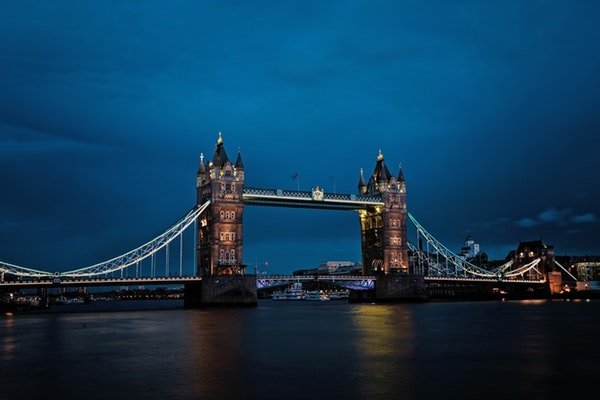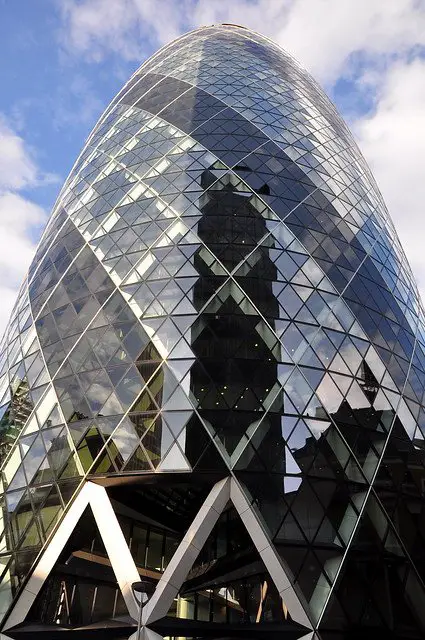After moving to London two months ago, I realised I knew very little about the city. Beyond having a basic idea of how to get around, knowing what some of the major monuments are, and the addresses of a few good restaurants, my knowledge was shamefully limited. I had no real idea of its architecture,history or what London has to offer its residents.

Although I’d visited many times over the years, it was fair to say that I knew far more about my former adopted home of Madrid, and maybe even some of the cities I’ve visited on my travels, than the capital of my own country. I found that idea strange, but thanks to guide books and tourist information, we all absorb obscure facts about castles in Prague or immigration in Paris, but sometimes remain ignorant about our every day environments. I decided to redress this balance as a tourist would: with a guided tour.
Context Travel’s Portrait of a City walk seemed like the perfect option: a three-hour guided tour in a small group (up to 6 people, but just 4 on my chosen day) which covered the history and architecture of the City of London’s monuments. Nowadays, the central borough known as the City is well-known as one of London’s two financial districts, but I didn’t realise that its history stretched back as far as Roman times.
Starting at the southwest-corner of the once-walled City, our guide Caroline taught the group about Roman London (or Londinium). I now believe that the Roman city is to blame for the North-South divide which sees those who live above the River Thames literally looking down on their southern counterparts. Back in Roman days, this area was outside the city walls, with bankside Southwark (now a trendy cultural hub) seen as a potentially seditious area full of riotous spots such as playhouses. How perceptions change!

By the time the seventeenth century was drawing to a close, that sedition had supposedly crept inside the walls, with Britain’s royals concerned about the influence of coffee houses as alternative meeting spaces to the traditional pub (I can see their point, some of those iced frappuccino creations do have a very high sugar content). Worried that these new cafés were breeding grounds for new political movements, the monarchy made its presence felt in the area for the first time with the construction of the imposing Bank of England.
Nowadays, finance still makes its architectural mark in the City through the Lloyd’s Building, a Sir Richard Rogers-designed monstrosity which serves as the head office of Lloyd’s Bank. Rogers, who also co-designed the colourful Centre Pompidou in Paris, is famous for placing all the ‘workings’ of a building (elevators, pipes, etc.) on the outside rather than hiding them from view. Opinions on this idea vary: mine is that it makes the Lloyd’s building look like an ugly, ungainly factory dropped in the middle of London’s financial quarter.

Much more aesthetically pleasing to my eye is the now-iconic 30 St Mary’s Axe or ‘The Gherkin’ as it is more commonly known. Designed by another of Britain’s top architects, Sir Norman Foster, the smooth-sided office building towers above its neighbors injecting another modern touch to the area and making its mark on London’s skyline.
Encouraged by the knowledge gleaned during the tour, I returned to the City for another taste of sightseeing two weeks later for Open House London. Held on a September weekend each year, this free event allows visitors to have a nosy inside architecturally interesting buildings in Greater London, most of which are normally closed to the public. On day one I decided to see if the Lloyd’s Building looked any better from the inside. It certainly did: the vast glass atrium illuminated the main office space (or ‘The Room’ as it is known) with sunlight. The heavy wooden desks and old-fashioned fittings contrasted with the modern feel of the exterior of the 1986 building, as did the beautifully preserved Adam Room, an eighteenth-century dining room designed by Robert Adam for the Earl of Shelbourne. The stucco-eighteenth-century illuminated room was bought whole at auction by Lloyd’s in 1958, later moving to the new building.
But it shouldn’t take a guided tour or a big event like this to get out there and see your city. Although due to its size and long history, London may have more to offer than most neighborhoods, there’s bound to be more than one thing on your doorstep worth visiting. Check out that church on the corner, that museum you pass every day, that local gallery. Uncovering and learning about your own town makes more sense than – and is hopefully just as rewarding – as memorizing those facts about Prague Castle. And the trip certainly is more cost-effective.
Things to Know Before Visiting London
* photo of Gherkin by Armando Maynez on flickr
* all other photographs by Kate Turner ©
Header Photo by 12019

I love that you’re getting to know your own city. 🙂 Funny how easy it is to explore everywhere else and miss out on the delights close to home. I will be more adventurous. 🙂
It’s so easy not to… I realised I always make the effort abroad, but never at home – like most people, I guess. Have fun exploring!